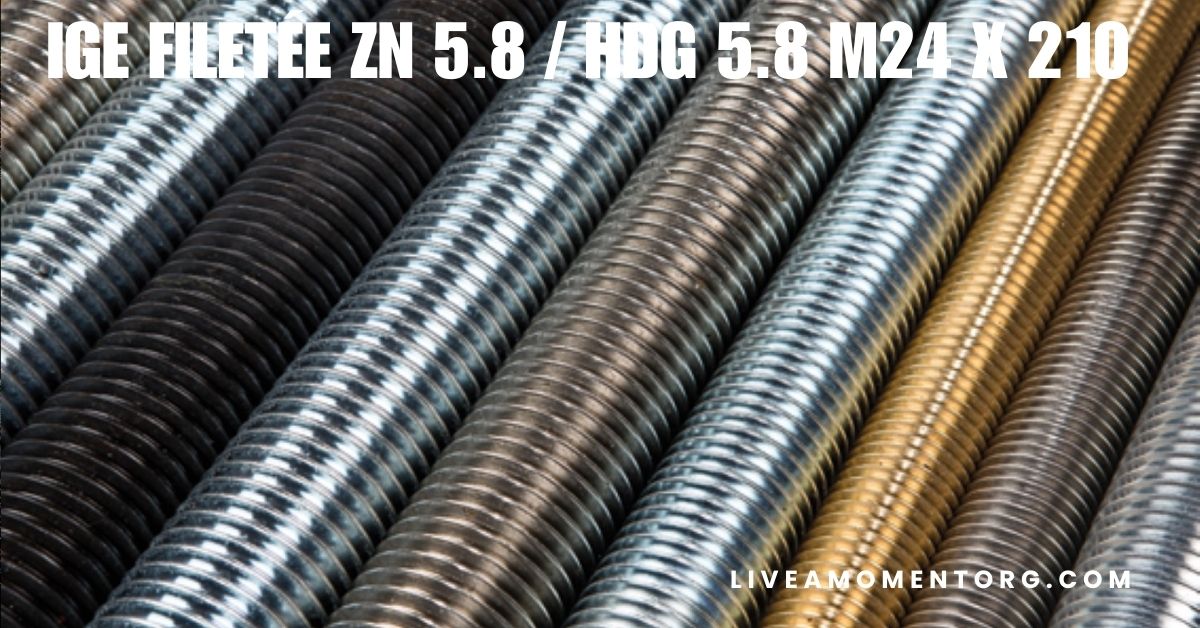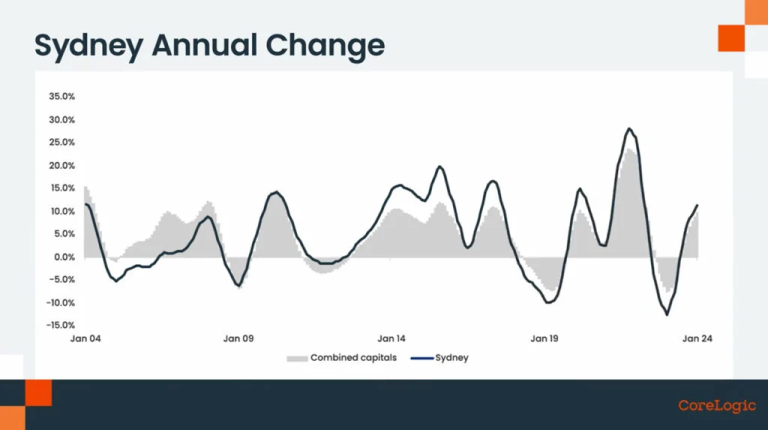IGE Filetée Zn 5.8 / HDG 5.8 M24 x 210: Everything You Need to Know
In the world of construction and engineering, small components can make a big difference. One such critical element is the IGE Filetée Zn 5.8 / HDG 5.8 M24 x 210. This might sound like a mouthful of technical jargon, but don’t worry – we’re here to break it down for you in simple terms. Whether you’re a DIY enthusiast, a construction professional, or just curious about the nuts and bolts of building projects, this guide will help you understand everything about this essential fastener.
What Exactly is an IGE Filetée Zn 5.8 / HDG 5.8 M24 x 210?
Let’s start by decoding this complex name:
- IGE Filetée: This French term translates to “threaded rod” in English. It refers to a long bolt or rod with threads running along its entire length.
- Zn 5.8: This indicates that the rod is made of grade 5.8 steel and has a zinc (Zn) coating for corrosion resistance.
- HDG 5.8: HDG stands for “Hot-Dip Galvanized,” another type of protective coating. The 5.8 again refers to the steel grade.
- M24: This specifies the diameter of the rod, which is 24 millimeters.
- x 210: This number represents the length of the rod, which is 210 millimeters.
In simple terms, we’re talking about a strong, corrosion-resistant threaded rod that’s 24mm thick and 210mm long. It’s designed to hold heavy loads and withstand tough conditions.
Why Choose the IGE Filetée Zn 5.8 / HDG 5.8 M24 x 210?
- Strength: With a grade of 5.8, this rod can handle significant loads, making it suitable for many construction projects.
- Corrosion Resistance: The zinc coating (Zn) or hot-dip galvanization (HDG) protects the steel from rust and corrosion.
- Versatility: Its full-length threading allows for adjustable fastening depths.
- Durability: Designed to last for years, even in challenging environments.
- Standard Size: The M24 x 210 dimensions make it compatible with many standard nuts and fixtures.
Common Applications of IGE Filetée Zn 5.8 / HDG 5.8 M24 x 210
This versatile fastener finds use in various applications:
- Construction: Used in building foundations, frameworks, and structural supports.
- Bridge Building: Essential for connecting and anchoring bridge components.
- Industrial Equipment: Helps secure heavy machinery and equipment.
- Marine Structures: Its corrosion resistance makes it ideal for docks, piers, and offshore platforms.
- Telecommunications: Used in the installation of cell towers and antenna masts.
- Renewable Energy: Plays a role in wind turbine and solar panel installations.
The Manufacturing Process: How IGE Filetée Zn 5.8 / HDG 5.8 M24 x 210 is Made
Understanding how these rods are made can help you appreciate their quality and strength:
- Steel Production: The process begins with creating grade 5.8 steel, which offers a good balance of strength and ductility.
- Cutting and Shaping: The steel is cut to the required 210mm length and shaped into a 24mm diameter rod.
- Threading: The entire length of the rod is threaded using precision machinery to ensure consistent thread depth and spacing.
- Cleaning: The rod is thoroughly cleaned to remove any oils, dirt, or debris from the manufacturing process.
- Coating Application:
- For Zn (Zinc) coating: The rod is dipped in molten zinc or electroplated.
- For HDG (Hot-Dip Galvanized): The rod is immersed in a bath of molten zinc at around 860°F (460°C).
- Cooling and Inspection: After coating, the rod is cooled and inspected for quality, ensuring it meets all required specifications.
Technical Specifications of IGE Filetée Zn 5.8 / HDG 5.8 M24 x 210
Let’s dive into the nitty-gritty details:
- Material: Grade 5.8 Steel
- Tensile Strength: Minimum 520 MPa
- Yield Strength: Minimum 415 MPa
- Elongation at Break: Minimum 10%
- Thread Pitch: 3mm (standard for M24 thread)
- Coating Thickness:
- Zn coating: Typically 5-8 microns
- HDG coating: Usually 45-80 microns
- Weight: Approximately 1.5 kg (may vary slightly)
- Thread Class: 6g (standard tolerance class for external threads)
Installation Guide: How to Properly Use IGE Filetée Zn 5.8 / HDG 5.8 M24 x 210
Proper installation is crucial for the performance and longevity of your IGE Filetée Zn 5.8 / HDG 5.8 M24 x 210. Here’s a step-by-step guide:
- Preparation:
- Ensure you have the correct tools: wrench, torque wrench, washers, and compatible nuts.
- Clean the installation area thoroughly.
- Hole Alignment:
- Make sure the holes in your structure align properly with where you plan to insert the rod.
- Insertion:
- Carefully insert the rod through the aligned holes.
- If needed, use a mallet to gently tap the rod into place.
- Washer Placement:
- Place washers at both ends of the rod before adding nuts.
- This helps distribute the load and prevent damage to the material being fastened.
- Nut Application:
- Thread nuts onto both ends of the rod.
- Initially, tighten by hand to ensure proper threading.
- Torquing:
- Use a torque wrench to tighten the nuts to the specified torque value.
- For M24 bolts of grade 5.8, a typical torque range is 440-540 Nm, but always consult project-specific guidelines.
- Final Check:
- Ensure the installation is secure and the rod isn’t protruding dangerously.
- Check that the structure moves as intended (or doesn’t move, if that’s the goal).
Remember, if you’re unsure about any step in the installation process, it’s always best to consult with a professional or refer to specific project guidelines.
Maintenance and Care for IGE Filetée Zn 5.8 / HDG 5.8 M24 x 210
While these rods are designed for durability, proper maintenance can extend their lifespan:
- Regular Inspections: Check for signs of wear, corrosion, or loosening every 6-12 months.
- Cleaning: Remove dirt and debris regularly. Use a wire brush for stubborn grime, but be careful not to damage the protective coating.
- Reapplication of Protective Coating: If you notice the zinc or HDG coating wearing off, consider reapplying a protective layer. This is especially important in harsh environments.
- Retightening: Periodically check and retighten the nuts if necessary, using a torque wrench to ensure proper tension.
- Lubrication: In applications where the rod needs to allow movement, apply a suitable lubricant to prevent wear and reduce friction.
- Environmental Protection: When possible, shield the fastener from direct exposure to harsh elements or chemicals.
Comparing IGE Filetée Zn 5.8 / HDG 5.8 M24 x 210 to Alternatives
To understand why this specific fastener might be chosen for a project, let’s compare it to some alternatives:
- Stainless Steel Rods:
- Pros: Excellent corrosion resistance, attractive appearance
- Cons: More expensive, generally lower strength than grade 5.8 steel
- Grade 8.8 Steel Rods:
- Pros: Higher strength than 5.8 grade
- Cons: More expensive, may be overkill for many applications
- Uncoated Steel Rods:
- Pros: Lower initial cost
- Cons: Prone to corrosion, shorter lifespan in outdoor applications
- Shorter or Longer Versions (e.g., M24 x 180 or M24 x 240):
- Pros: May be more suitable for specific project depths
- Cons: Less versatile, may require custom nuts or fixtures
- Different Diameter Rods (e.g., M20 or M30):
- Pros: Can be better suited for lighter or heavier loads
- Cons: May not fit standard fixtures designed for M24 rods
The IGE Filetée Zn 5.8 / HDG 5.8 M24 x 210 offers a balanced combination of strength, corrosion resistance, and cost-effectiveness, making it a popular choice for many applications.
Environmental Impact and Sustainability
In today’s world, considering the environmental impact of construction materials is crucial. Here’s how the IGE Filetée Zn 5.8 / HDG 5.8 M24 x 210 stacks up:
- Recyclability: Steel is one of the most recycled materials globally. At the end of its life, this rod can be fully recycled.
- Longevity: The corrosion-resistant coating significantly extends the lifespan of the product, reducing the need for frequent replacements.
- Energy Efficiency: The manufacturing process, especially hot-dip galvanization, requires significant energy. However, the long lifespan of the product offsets this initial energy investment.
- Zinc Considerations: While zinc mining has environmental impacts, the amount used in coating these rods is relatively small. The corrosion protection it provides extends the life of the steel, which is a net positive for resource conservation.
- Potential for Reuse: In many cases, these rods can be uninstalled and reused in new projects, further extending their lifecycle.
- Low Maintenance: The durability of these fasteners means less need for maintenance or replacement, reducing overall resource consumption.
While no construction material is perfect from an environmental standpoint, the IGE Filetée Zn 5.8 / HDG 5.8 M24 x 210 offers a good balance of durability and recyclability.
Safety Considerations When Working with IGE Filetée Zn 5.8 / HDG 5.8 M24 x 210
Safety should always be a top priority when handling and installing these fasteners:
- Personal Protective Equipment (PPE):
- Wear safety glasses to protect your eyes from metal shavings.
- Use work gloves to prevent cuts from sharp threads.
- Steel-toed boots can protect your feet if you drop the heavy rod.
- Proper Lifting Techniques:
- These rods are heavy. Use proper lifting techniques to avoid back injuries.
- For larger quantities, consider using a trolley or getting help from a colleague.
- Tool Safety:
- Ensure all tools, especially power tools, are in good working condition.
- Follow manufacturer guidelines for torque wrenches to prevent over-tightening.
- Chemical Safety:
- Be aware that the zinc coating can release fumes if heated to very high temperatures.
- Avoid grinding or welding on galvanized surfaces without proper ventilation and respiratory protection.
- Fall Protection:
- When installing these rods at heights, use appropriate fall protection equipment.
- Load Awareness:
- Never exceed the rated load capacity of the fastener.
- Be aware of dynamic loads that may temporarily exceed static load ratings.
- Proper Storage:
- Store rods in a dry area to prevent slipping hazards from moisture.
- Avoid storing at heights where they could fall on someone.
Remember, safety isn’t just about protecting yourself – it’s about ensuring the integrity of your installation and the safety of everyone who will interact with the structure in the future.
Future Trends and Innovations in Threaded Rod Technology
While the IGE Filetée Zn 5.8 / HDG 5.8 M24 x 210 is a tried-and-true solution, the world of construction fasteners continues to evolve. Here are some trends and innovations to watch for:
- Advanced Coatings: Research is ongoing into new types of protective coatings that could offer even better corrosion resistance or additional properties like enhanced fire resistance.
- Smart Fasteners: The integration of sensors into large fasteners could allow for real-time monitoring of tension and structural integrity, enhancing safety and maintenance practices.
- Composite Materials: While steel remains the go-to for high-strength applications, research into composite threaded rods could lead to options that are even lighter and stronger.
- Eco-friendly Production: Manufacturers are continuously working on reducing the environmental impact of producing these fasteners, from more energy-efficient galvanization processes to the use of recycled steel.
- Standardization and BIM: As Building Information Modeling (BIM) becomes more prevalent, expect to see more standardized data available for fasteners like the IGE Filetée Zn 5.8 / HDG 5.8 M24 x 210, making it easier to integrate them into digital design processes.
- Improved Thread Designs: Ongoing research into thread geometry could lead to designs that distribute loads more evenly or are easier to install and remove.
- Self-healing Materials: While still in early research stages, self-healing metals could eventually lead to fasteners that can repair minor damage on their own, further extending their lifespan.
As these innovations develop, they may influence or enhance products like the IGE Filetée Zn 5.8 / HDG 5.8 M24 x 210. Staying informed about these advancements can help you make the best choices for your future construction projects.
Final Thoughts
The IGE Filetée Zn 5.8 / HDG 5.8 M24 x 210 stands as a testament to the importance of getting the small details right in construction and engineering. Its specific combination of size, strength, and protective coating makes it a versatile and reliable choice for a wide range of applications.
As you embark on your next project, whether it’s a DIY home improvement task or a large-scale construction endeavor, remember the crucial role that fasteners like this play. By choosing the right components and using them correctly, you’re not just building structures – you’re creating safe, durable, and efficient spaces that will stand the test of time.
Thank you for taking the time to delve into the world of the IGE Filetée Zn 5.8 / HDG 5.8 M24 x 210 with us. We hope this comprehensive guide has provided you with valuable insights and will serve as a useful reference in your future endeavors. Remember, in the world of construction and engineering, knowledge truly is power – and sometimes, that power comes in the form of a precisely engineered threaded rod.
Frequently Asked Questions about IGE Filetée Zn 5.8 / HDG 5.8 M24 x 210
To address common queries and concerns, here’s a list of frequently asked questions:
What does “5.8” in the name mean?
The “5.8” refers to the grade of the steel. It indicates a tensile strength of 500 MPa and a yield strength that’s 80% of this (400 MPa).
Can I cut the rod if it’s too long for my application?
Yes, you can cut the rod to size. However, be sure to use the proper tools and re-thread the cut end if necessary. Remember that cutting may affect the protective coating at that end.
What’s the difference between Zn and HDG coating?
Zn (zinc) coating is typically thinner and applied through electroplating. HDG (Hot-Dip Galvanized) coating is thicker and applied by dipping the rod in molten zinc. HDG generally provides better corrosion resistance.
How much weight can this rod support?
The exact load capacity depends on the application and installation method. However, a single M24 rod of grade 5.8 can typically support several tons in tension. Always consult with a structural engineer for specific load calculations.
Can I use this rod in marine environments?
Yes, the zinc or HDG coating provides good corrosion resistance suitable for many marine applications. However, in extremely corrosive environments, additional protective measures may be necessary.
How long will the corrosion protection last?
The lifespan of the coating depends on environmental conditions. In typical outdoor environments, it can last 20-100 years. Regular inspections can help determine if recoating is necessary.
Can I paint over the zinc or HDG coating?
Yes, but it requires proper surface preparation and the use of compatible paints. Consult with a paint specialist for the best results.
Are these rods suitable for use in food processing facilities?
While the rods themselves are not toxic, they’re not typically recommended for direct food contact. In food processing facilities, stainless steel fasteners are often preferred.
Can I reuse these rods after uninstalling them?
In many cases, yes. Inspect the rod for damage or wear, and ensure the threads are clean and undamaged. If in doubt, it’s safer to use a new rod.
How do I dispose of these rods when they’re no longer needed?
These rods are fully recyclable. Contact your local metal recycling facility for proper disposal instructions.







